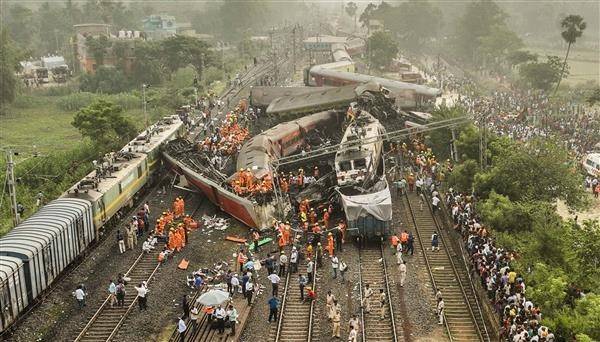Tragedy Unfolds: Faulty Signalling Blamed for Fatal Train Crash
A fatal incident in India, where a passenger train derailed, colliding with two others, resulted in a devastating loss of 290 lives. Initial investigations have pointed towards signal failure in Odisha’s Balasore district as the cause of this tragic event.
Learning from Past Tragedies
The haunting echoes of railway catastrophes reverberate across borders. Pakistan, too, has witnessed severe railway accidents over the past decade. Each disaster holds critical lessons that demand attention.
Historical Inheritance and Modern Challenges
Post-Independence, Pakistan inherited an extensive 11,881-kilometer track from the British Raj. However, in many areas, the broad gauge track (5 feet, 6 inches) laid during colonial rule remains unchanged to standard or narrow gauge.
Parallel Incidents: A Call for Action
The 2005 Ghotki train disaster in Pakistan, claiming over 130 lives, resonates with the recent Indian tragedy. The similarities underscore a shared urgency for enhanced safety measures in railway management.
Reinforcing Safety Measures
Railway authorities on both sides must fortify their systems against faults and errors. Collaborative efforts, stringent maintenance, and robust communication are pivotal for averting such catastrophes.
Safeguarding Operations: Key Strategies
- Thorough Maintenance: Regular inspections to identify mechanical issues and safety hazards are imperative.
- Staff Training: Equipping operators with comprehensive training on safety protocols and emergency procedures is crucial.
- Advanced Safety Systems: Installation of Automatic Train Control (ATC) and Positive Train Control (PTC) systems can prevent collisions and operational errors.
Modernizing Signalling and Infrastructure
- Advanced Signalling Systems: Centralised Traffic Control and Computer-based Interlocking enhance train movement safety.
- Gate Crossing Safety: Implementing warning signs, lights, gates, and alarms can avert accidents at crossings.
Prioritizing Passenger Safety
- Passenger Education: Informing passengers about safety measures and emergency protocols is vital.
- Safety Enforcement: Strict adherence to safety regulations and penalties for non-compliance is imperative.
Integration and Technological Upgrades
- Communication Enhancement: Reliable communication systems within and between trains are critical for swift emergency response.
- Data Analysis: Regular monitoring and analysis of safety data to identify potential risks and improve measures.
Unified Efforts for Modernization
- Cross-departmental Coordination: Departments like mechanical, civil, signals, telecom, commercial, and electrical must coordinate for efficient operations.
- Training and Infrastructure Upgrade: Upgrading Railway Academy standards and sending officials for international training is essential despite funding challenges.
Enhancing railway safety demands a comprehensive approach, incorporating advanced technology, stringent protocols, and unified efforts across departments. Learning from tragedies paves the way for a safer and more efficient railway system.




